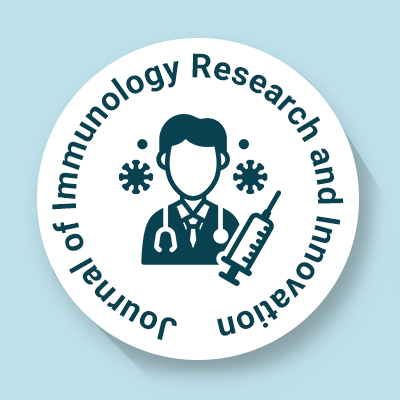
Journal of Immunology Research and Innovation
OPEN ACCESS

OPEN ACCESS
Host-pathogen interaction explain the relationship between a host organism (like humans, animals, or plants) and a pathogen (such as bacteria, viruses, or fungi) that infects them. This link can occur at various levels like molecular, cellular, organismal, or even at the population scale. Basically, it figures how pathogens survive and grow within their host and how the host protects itself.
At the molecular and cellular levels, pathogens enter the host and start to grow quickly. This rapid extension may result in sickness in multiple ways. Certain pathogens impose damage simply by taking up space within the host, hindering with normal actions. Some produces toxins that destroy the host, causing fever, pain, or swelling. Viruses represent a particular type of pathogen that capture a host by installing their genetic material (DNA or RNA) into the cells of the host. Once inside, the viral DNA can take control of the cell's regular processes, such as replicating DNA, producing proteins, or even correctly folding proteins, which interferes with normal cell operations. Certain viruses contain mechanisms to avoid the host's immune response, which complicates the body's ability to resist infections.
On a larger scale, the link between host and pathogen can grow. Pathogens progress to fit their host settings over time, but this may also result in complications. For example, pathogens can reproduce and grow easily in a host, but if the host population gets lowered or weakened, the pathogen may struggle to survive. This is due to the fact that a pathogen depends on the host for survival, and a significant decline in the host population can restrict the pathogen's resources. Moreover, hosts can develop immune reactions that are better at identifying and battle against the pathogen. This produces a sort of arms race in which the pathogen continually attempts to adjust to the host's immune responses, while the host increases its strategies to counterattack.
Various forms of interactions exist between hosts and pathogens. They are Commensalism, a type of interaction in which the pathogen gains benefit from the host while not imposing damage (e.g., certain bacteria found in the human intestine). Mutualism, a type of interaction in which both the host and the pathogen gain benefits from each other (e.g., Bacteria that assist in food digestion within the intestines). Parasitism, a type of interaction where the pathogen damages the host to get some benefits, as seen in many infections (e.g., Malaria caused by Plasmodium parasites).
Current methods for treating pathogens focus on either removing the pathogen, suppressing its growth, or help the host's immune system in fighting the infection. Antibiotics are often used for the bacterial infections. These treatment focus on particular characteristics of bacterial cells, like their cell walls or the processes involved in protein production. However, antibiotic resistance is a growing issue, as bacteria adjust to resist the impact of antibiotics.